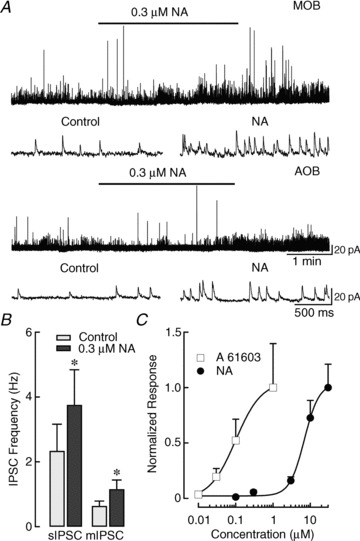Figure 5. NA produces a concentration-invariant increase in sIPSC frequency in MCs.

A, top traces: recording from an MC in the MOB where a low concentration of NA increased sIPSC frequency by ∼1-fold (control: 2.5 Hz, NA: 4.5 Hz). Lower traces: recording from an MC in the AOB where a low concentration of NA also increased sIPSC frequency (control: 2.5 Hz, NA: 4.5 Hz). Representative expanded traces pre- and post-application of NA are shown below. B, a low concentration of NA increased both sIPSCs (n= 10) and mIPSCs (n= 6) in the AOB. mIPSCs were recorded in the presence of dl-2-Amino-5-phosphonopentanoic acid, 6-Cyano-7-nitroquinoxaline-2,3-dione disodium and tetrodotoxin (**P < 0.05). C, dose–response curve for the effects of NA (black circles) and A 61603 (white squares) on sIPSC frequency in the AOB. Data were obtained from different cells and normalized to the fold increase in sIPSCs at the highest concentration of agonist. The fitted line was obtained using the Hill equation; A 61603 was more potent than NA (NA, EC50: 6.9 μm; A 61603, EC50: 0.1 μm). At 10 nm, A 61603 produced a small, though not significant, fold increase (control: 2.5 ± 1.0 Hz, A 61603: 4.3 ± 2.6 Hz, P > 0.3, n= 6). Similarly, 0.1 μm NA produced a small, but not significant, fold increase in frequency (control: 1.5 ± 0.5 Hz, NA: 1.9 ± 0.6 Hz, P > 0.1, n= 7). At concentrations greater than these, the frequency increases were statistically significant for both NA and A 61603 (see Results). mIPSCs, miniature IPSCs; MOB, main olfactory bulb; NA, noradrenaline; sIPSCs, spontaneous IPSCs.
